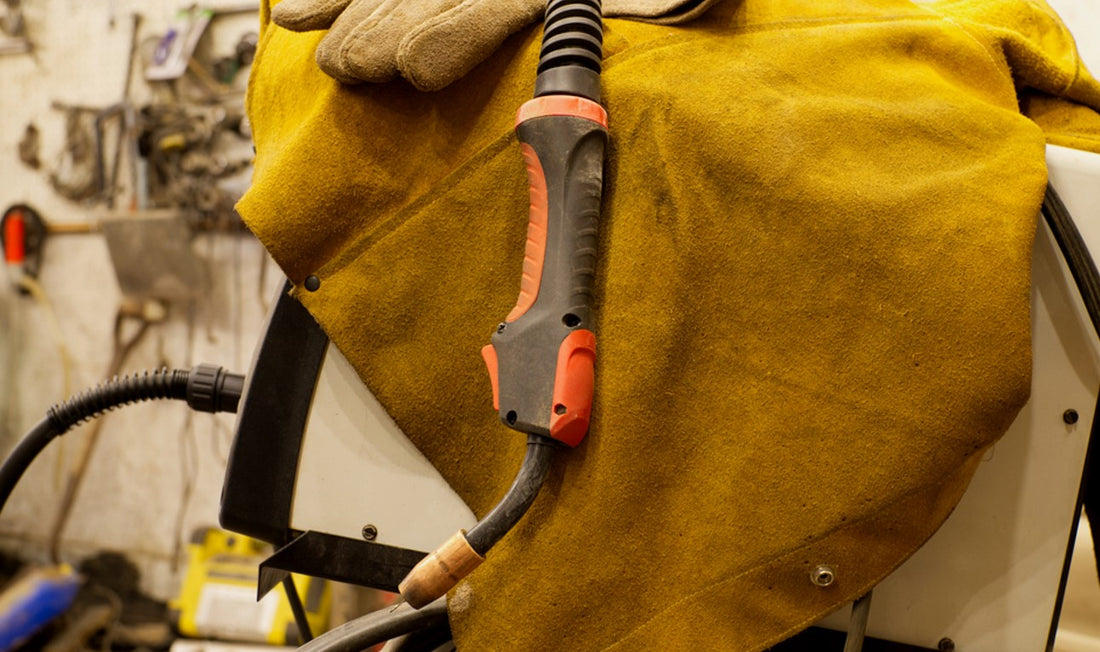Whether you are MIG welding around the house on DIY projects or you work in the welding industry, understanding amperage and setting is crucial.
There are various criteria to consider when setting your MIG weld controls, including materials, metal thickness, shielding gas, electrode wires, and amperage.
Before tackling any MIG welding application, look at the charts and tips below.
MIG Welding Wire Size
Your MIG welding wire size will determine the amperage setting used. The amp range overlaps, giving you various options for each current setting.
|
Common Wire Sizes |
Amps |
|
0.023 |
30-130 amps |
|
0.030 |
40-145 amps |
|
0.035 |
50-180 amps |
|
0.045 |
75-250 amps |
The size of your wire and the amp setting will vary depending on the type of metal you are working on.
There are various charts from various manufacturers, which all vary. The settings in the list below are a compilation of general guidelines for a good starting point.
|
Wire Type |
Wire Size |
Settings |
Material Thickness |
|||||
|
3/8 |
5/16 |
1/4 |
3/16 |
12g |
||||
|
ER70S-6 Gas- CO2 Flow Rate- 20CFH |
.023” |
Voltage |
NA |
NA |
NA |
20.5 |
20 |
|
|
Wire-speed |
NA |
NA |
NA |
320 |
240 |
|||
|
ER70S-6 Gas- CO2 Flow Rate- 20CFH
|
.030” |
Voltage |
22 |
20.5 |
29 |
19 |
19 |
|
|
Wire-speed |
390 |
335 |
280 |
240 |
200 |
|||
|
ER70S-6 Gas- CO2 Flow Rate- 20CFH |
0.35” |
Voltage |
22.5 |
22 |
21.5 |
20 |
19.5 |
|
|
Wire Speed |
310 |
285 |
260 |
225 |
180 |
|||
|
ER70S-6 Gas- 25% CO2&75% AR Flow rate- 20CFH |
0.23” |
Voltage |
NA |
NA |
NA |
19 |
18 |
|
|
Wire-speed |
NA |
NA |
NA |
320 |
250 |
|||
|
ER70S-6 Gas- 25% CO2&75% AR Flow rate- 20CFH |
.030” |
voltage |
20 |
19.5 |
19 |
18 |
18 |
|
|
Wire-speed |
390 |
995 |
280 |
240 |
200 |
|||
|
ER70S-6 Gas- 25% CO2&75% AR Flow rate- 20CFH
|
0.035” |
Voltage |
21 |
20.5 |
20 |
19 |
18.5 |
|
|
Wire-speed |
310 |
285 |
260 |
225 |
180 |
|||
|
ER70S-6 Gas- 25% CO2&75% AR Flow rate- 20CFH |
0.45” |
Voltage |
21 |
20.5 |
20 |
18 |
18 |
|
|
Wire-speed |
240 |
220 |
180 |
155 |
140 |
|||
|
E71T-GS Flux Core Tubular |
.030” |
Voltage |
20 |
19. |
18.5 |
17.5 |
15 |
|
|
375 |
340 |
300 |
275 |
240 |
||||
|
Wire-speed |
||||||||
|
E71T-GS Flux Core Tubular |
.035” |
Voltage |
21 |
20 |
18.5 |
17.5 |
16 |
|
|
Wire-speed |
300 |
275 |
250 |
210 |
170 |
|||
|
E71T-GS Flux Core Tubular |
.045” |
Voltage |
22.5 |
21.5 |
19 |
17.5 |
16 |
|
|
Wire-speed |
230 |
205 |
180 |
100 |
75 |
|||
As you can tell, many of the different wires in the list can work for various material sizes. On the other hand, there are a large number of wires that you can only use on specific metals, usually the thicker ones.
What Happens If You Use the Wrong Settings?

Using the wrong settings can cause significant damage to your weld and possibly your equipment. You always want to ensure you follow the guides provided by the manufacturer of your MIG welder.
A good way to check your weld to ensure the settings are spot on is by closely monitoring the weld bead.
|
Weld Bead |
Meaning |
|
The amp setting is too low |
|
The amp setting is too high |
|
Too much voltage (long arc) |
|
Normal beads (what you want to see) |
Other things to consider when inspecting your weld bead include improper movements while handling the MIG welder.
If you move too fast with your arc hand, you will see convex, narrow beads with poor weld penetration and inconsistent beading. Moving too slowly will overheat the weld creating poor weld penetration conditions and wide beading.
Lastly, shielding gas, or lack thereof, can create inadequate welding conditions, causing the bead to have pinholes and high porosity.
MIG Welding Amperage vs. Voltage

Two essential features to remember when MIG welding is the amperage and voltage. Both are critical to creating the perfect amount of power and current to get a smooth and precise weld.
Many people new to the industry can often confuse the two or even think they are the same thing. This couldn’t be further from the truth. Unlike other popular processes, the MIG welding process maintains the voltage setting throughout the application.
The amperage in MIG welding fluctuates depending on the wire speed. The quicker the wire is fed into the metal joint, the better the contact and connection, thus, higher heat.
MIG Weld Settings For Common Metal
If you are searching for a quick and easy guide for common metals, here is an excellent MIG welding amperage chart to reference.
|
Metals |
Setting |
|
Aluminum |
|
|
Stainless Steel |
|
|
Common Steel |
|
Final Thoughts
The settings of your MIG welder, from the amperage to the thickness of your material, make all the difference in the end result of your application. Utilize the guides and tips listed above to ensure you get quality results every time.

